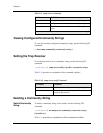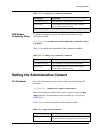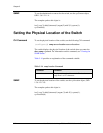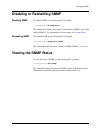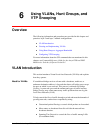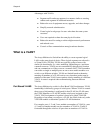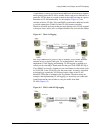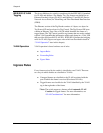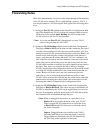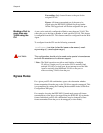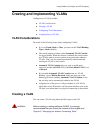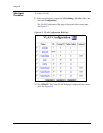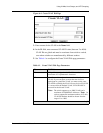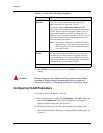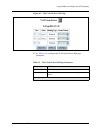
6-4 User Guide for the Avaya P580 and P882 Multiservice Switches, v6.1
Chapter 6
IEEE 802.1Q VLAN
Tagging
The Avaya Multiservice switch is compliant with the IEEE 802.1Q standard
for VLANs and defines a Tag Header. Two Tag formats are defined as an
Ethernet Encoded (4 bytes) for 802.3 and Ethernet V2 and SNAP (Service
Network Access Point) for Token Ring and Fiber Distributed Data Interface
(FDDI).
The Ethernet version of the Tag Header consists of 4 bytes, two bytes for
Tag Protocol ID and two bytes for Tag Control. The Tag Protocol ID bytes
contain an Ethernet Type value of 81-00 which identifies the frame as a
tagged frame. The Tag Control specifies tag formats that are used to embed
explicit VLAN membership information within each frame in a 12-bit VID
that provides 4094 possible VLAN ID’s. IEEE 802.1Q defines the bridging
rules for VLANs (ingress and egress rules which are described in detail in
“VLAN Operation” later in this chapter).
VLAN Operation VLAN operation is based on three sets of rules:
■ Ingress Rules
■ Forwarding Rules
■ Egress Rules
Ingress Rules
Every frame received by the switch is classified to one VLAN. There are
two ways in which frames are classified to VLANs:
■ Untagged frames are classified to the VLAN associated with the
port on which the frame is received (Port-based VLANs).
■ Tagged frames are classified to the VLAN identified by the VLAN
tag in the tag header of the frame.
*Note: The switch supports a feature called Automatic VLAN
Creation for tagged frames. For more information, see
“VLAN Considerations” for more information.



